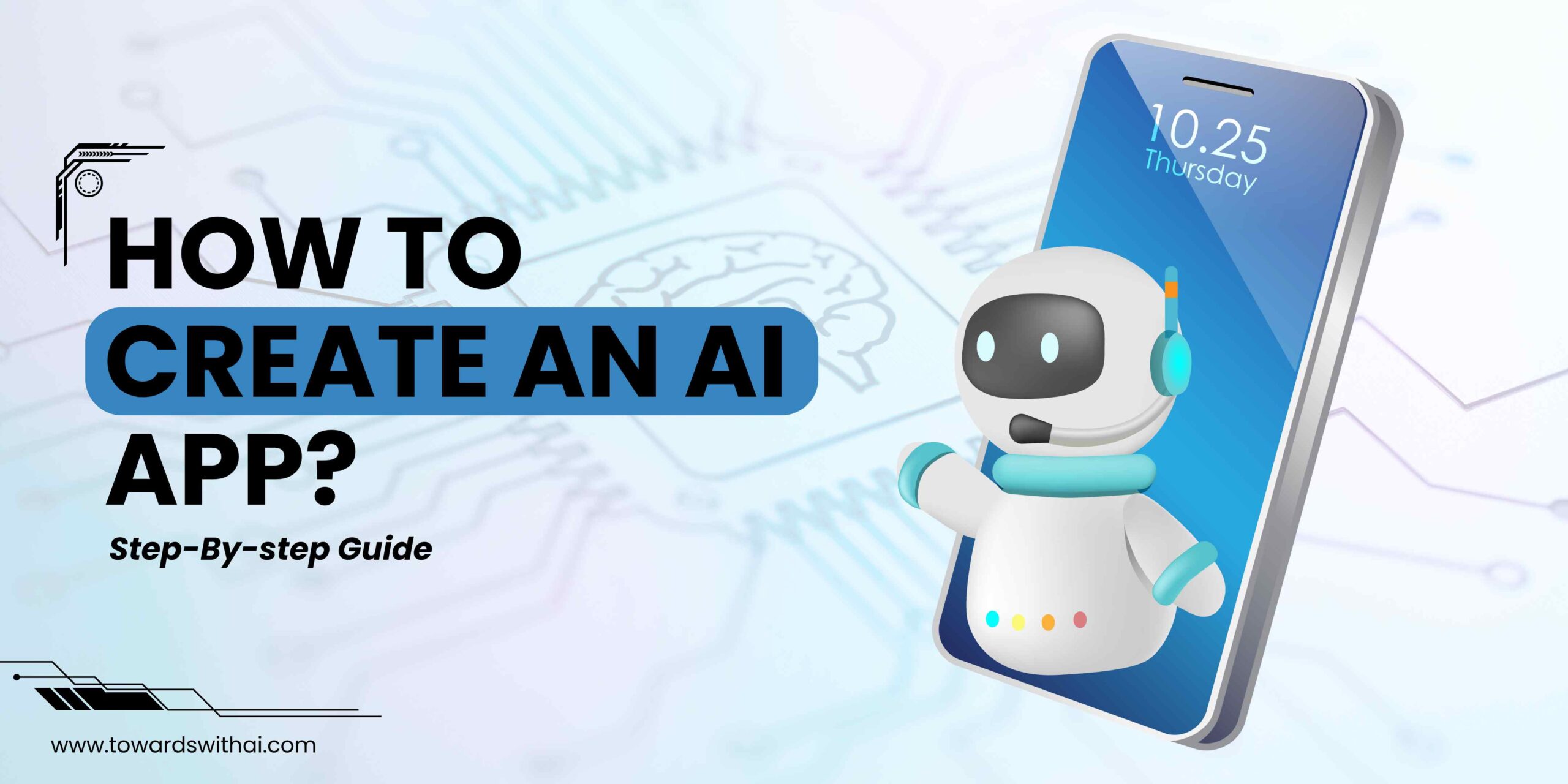Artificial Intelligence (AI) is revolutionizing various industries by automating tasks, providing insights, and enhancing user experiences. Building an AI application can seem daunting, but with the right approach, it becomes a manageable and rewarding project. This guide will walk you through the steps of how to create an AI app, ensuring that you have a clear understanding of the process from start to finish.
Understanding AI Applications
What is an AI Application?
An AI application integrates artificial intelligence techniques, such as machine learning, natural language processing, or computer vision, to perform tasks that typically require human intelligence. These applications can analyze data, recognize patterns, make decisions, and even predict outcomes.
Types of AI Applications
- Machine Learning Apps: Use algorithms to learn from and make predictions based on data.
- Natural Language Processing (NLP) Apps: Understand and generate human language.
- Computer Vision Apps: Interpret and process visual information from the world.
- Robotic Process Automation (RPA) Apps: Automate repetitive tasks typically performed by humans.
Steps to Create an AI App
Step 1: Define Your Goals and Objectives
Identify the Problem
Start by identifying the problem you want to solve with your AI application. Whether it’s enhancing customer service, automating a task, or analyzing large datasets, having a clear goal will guide your development process.
Determine the Scope
Define the scope of your AI app. Decide on the features you want to include and the specific AI techniques you’ll use. This step will help in outlining the project and setting realistic milestones.
Also read; How To Build An AI Art Generator?
Step 2: Gather and Prepare Data
Data Collection
Collect the data you need to train your AI model. This data can come from various sources, including internal databases, public datasets, or third-party providers.
Data Preprocessing
Prepare your data by cleaning, normalizing, and structuring it. This step is crucial as the quality of your data directly impacts the performance of your AI model.
Step 3: Choose the Right AI Model
Selecting the Model
Choose a model that fits your needs. For machine learning, options include linear regression, decision trees, and neural networks. For NLP, consider models like BERT or GPT. For computer vision, convolutional neural networks (CNNs) are popular.
Pre-trained Models vs. Custom Models
You can use pre-trained models available from platforms like TensorFlow, PyTorch, or Hugging Face. Alternatively, you can train a custom model if you have specific requirements that pre-trained models cannot meet.
Step 4: Develop and Train Your AI Model
Setting Up the Environment
Set up your development environment with the necessary libraries and frameworks. Common choices include TensorFlow, Keras, and PyTorch for machine learning, and OpenCV for computer vision.
Training the Model
Train your AI model using your prepared dataset. This involves feeding the data into the model, adjusting parameters, and iterating until the model performs well on validation data.
Step 5: Evaluate and Fine-Tune the Model
Evaluation
Evaluate your model’s performance using metrics such as accuracy, precision, recall, and F1 score. This step helps in understanding how well your model is performing and where it needs improvement.
Fine-Tuning
Fine-tune your model by tweaking hyperparameters, adding more data, or using techniques like cross-validation. This step aims to improve the model’s accuracy and generalization capabilities.
Step 6: Develop the Application
Backend Development
Develop the backend of your application to handle data processing and interactions with the AI model. Use frameworks like Django or Flask for Python, or Node.js for JavaScript.
Frontend Development
Create the frontend to provide an intuitive user interface. Use frameworks like React, Angular, or Vue.js to build responsive and interactive user experiences.
Step 7: Integrate AI Model with the App
API Development
Develop APIs to connect your AI model with the frontend. These APIs handle requests, process data, and return predictions or insights from the AI model.
Integration
Integrate the APIs with your frontend to enable seamless interaction between the user and the AI model. Ensure the integration is smooth and provides real-time responses.
Step 8: Testing and Deployment
Testing
Thoroughly test your AI app to identify and fix any issues. Perform unit tests, integration tests, and user acceptance tests to ensure the app functions correctly and meets user expectations.
Deployment
Deploy your AI app on a server or cloud platform. Popular choices include AWS, Google Cloud, and Azure. Ensure the app is scalable, secure, and performs well under load.
Step 9: Monitor and Maintain the App
Monitoring
Set up monitoring to track the performance of your AI app. Use tools like Google Analytics, AWS CloudWatch, or custom logging solutions to keep an eye on usage patterns and potential issues.
Maintenance
Regularly update and maintain your AI app. This includes updating the AI model with new data, fixing bugs, and adding new features based on user feedback.
Best Practices for Creating AI Apps
Focus on Quality Data
High-quality data is essential for training effective AI models. Ensure your data is accurate, clean, and representative of the problem you’re solving.
User-Centered Design
Design your AI app with the user in mind. Create an intuitive and engaging user experience that makes it easy for users to interact with the AI features.
Also Read; How To Build An AI Tool: A Comprehensive Guide
Continuous Improvement
AI models and applications should be continuously improved. Regularly update your model with new data, refine your algorithms, and enhance your app based on user feedback and technological advancements.
Conclusion
Creating an AI app involves a series of well-defined steps, from identifying the problem and gathering data to developing and deploying the application. By following this guide, you can build an AI application that leverages artificial intelligence to solve real-world problems and enhance user experiences. Whether you’re building an app for business, education, healthcare, or any other field, understanding the process of how to create an AI app will set you on the path to success.









